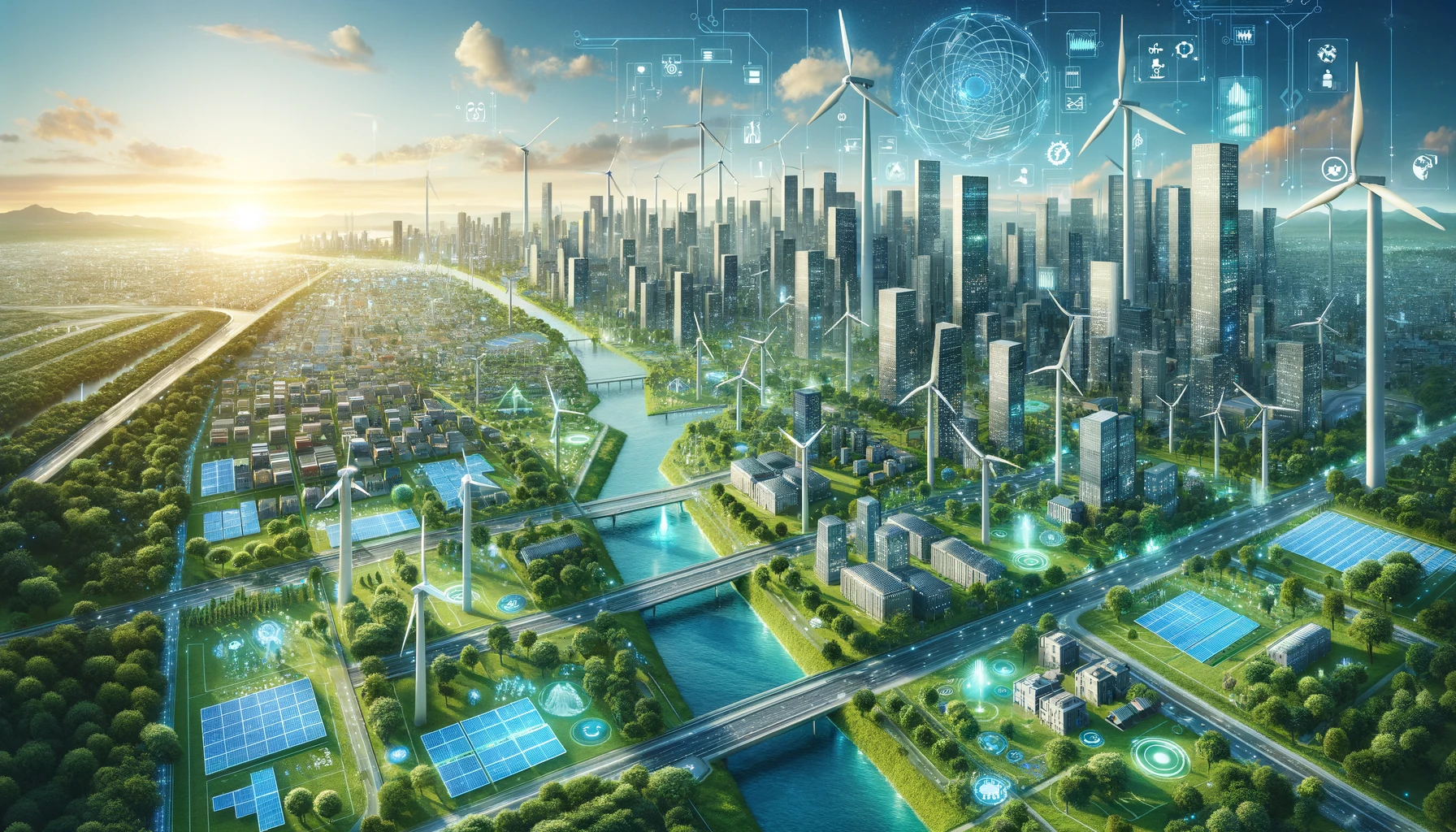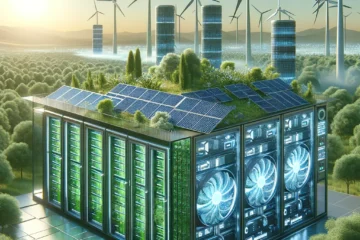The integration of multiple renewable energy sources into sustainable energy grids marks a significant milestone in our journey towards a greener, more sustainable future. As we face the pressing challenges of climate change and environmental degradation, the need for efficient, clean, and sustainable energy solutions has never been more critical. This article explores the complexities and innovations in integrating various renewable energy sources into a cohesive, efficient, and sustainable grid system, delving into the implications for renewable energy, technological advancements, clean energy, and smart cities.
Renewable Energy Integration: The Cornerstone of Sustainable Grids
Renewable energy sources, including solar, wind, hydroelectric, and geothermal, offer abundant, clean, and sustainable alternatives to traditional fossil fuels. The integration of these diverse energy sources into a single grid system presents unique challenges and opportunities. Understanding the varying nature of these renewable sources is key to optimizing their use and ensuring a constant, reliable energy supply. This section explores the methodologies and technologies facilitating this integration, highlighting how they contribute to building more resilient and adaptable energy systems.
Harnessing Diverse Renewable Sources
Integrating multiple renewable energy sources requires a deep understanding of their individual characteristics and how they can complement each other. Solar and wind power, for instance, are intermittent and dependent on weather conditions, while hydroelectric power offers more stability. This diversity necessitates innovative approaches to balance the grid, ensuring a steady energy supply even when one source is underperforming.
Technology’s Role in Energy Integration
Technological advancements are at the forefront of facilitating this integration. Smart grid technologies, AI, and advanced data analytics play pivotal roles in managing and distributing energy from various sources efficiently. These technologies enable real-time monitoring and predictive analysis, ensuring that energy distribution is optimized according to availability and demand.
Overcoming Intermittency Challenges
One of the biggest challenges in renewable energy integration is the intermittent nature of sources like solar and wind. Innovative solutions such as energy storage systems, demand response strategies, and grid interconnectivity are proving instrumental in overcoming these challenges. By storing excess energy and redistributing it when needed, these solutions enhance the reliability and stability of the sustainable energy grid.
Technological Advancements in Sustainable Grids
The leap towards sustainable energy grids is largely driven by rapid technological advancements. From cutting-edge renewable energy technologies to smart grid systems, these advancements are reshaping how we produce, distribute, and consume energy. This section delves into the latest technologies revolutionizing sustainable grids, emphasizing their role in facilitating a seamless transition to renewable energy sources.
Breakthroughs in Renewable Energy Technologies
Recent breakthroughs in renewable energy technologies, such as more efficient solar panels, larger-capacity wind turbines, and advanced bioenergy solutions, are significantly increasing the efficiency and viability of renewable energy sources. These technologies not only improve energy yield but also reduce the overall cost of renewable energy, making it more accessible and attractive.
Smart Grids: The Backbone of Integration
Smart grids are integral to the successful integration of renewable energy sources. Equipped with advanced sensors, IoT devices, and AI-driven analytics, smart grids enable dynamic energy management, adapting to fluctuations in energy supply and demand. This real-time adaptability ensures a balanced and efficient energy grid, minimizing wastage and optimizing resource utilization.
Innovations in Energy Storage
Energy storage technologies, including batteries, pumped hydro storage, and flywheel energy storage, are key to mitigating the intermittency issue of renewable sources. Advances in battery technology, in particular, have led to more efficient, longer-lasting, and environmentally friendly storage solutions, playing a crucial role in ensuring a consistent energy supply.
Clean Energy: Environmental and Economic Impacts
The shift towards sustainable energy grids has significant environmental and economic implications. By reducing reliance on fossil fuels, these grids contribute to lower greenhouse gas emissions, combatting climate change and improving air quality. This section examines the environmental benefits of renewable energy integration and its positive impact on economies globally.
Environmental Benefits of Renewable Energy
Integrating multiple renewable sources significantly reduces the carbon footprint of energy production. Unlike fossil fuels, renewable sources emit little to no greenhouse gases or pollutants, contributing to cleaner air and a healthier environment. The widespread adoption of sustainable grids is crucial in tackling climate change and preserving our planet for future generations.
Economic Advantages of Clean Energy
Beyond environmental benefits, renewable energy integration offers substantial economic advantages. It creates new job opportunities in the renewable energy sector, stimulates innovation, and reduces energy costs in the long run. Furthermore, as renewable technologies become more cost-effective, they provide a sustainable and financially viable energy solution for both developed and developing countries.
Global Cooperation for a Sustainable Future
The transition to sustainable energy grids requires global cooperation and collaboration. Sharing knowledge, technologies, and best practices across borders is essential for accelerating the adoption of renewable energy. International cooperation also helps in addressing the financial and technological challenges faced by developing countries, ensuring a more equitable and inclusive energy transition.
Smart Cities: Pioneers of Sustainable Grids
Smart cities are at the forefront of adopting and showcasing the potential of sustainable energy grids. These urban centers use technology and innovation to enhance the quality of life, reduce environmental impact, and create more efficient and sustainable urban spaces. This section focuses on how smart cities are implementing sustainable grids and the lessons they offer for broader adoption.
Smart Cities as Testbeds for Sustainable Technologies
Smart cities serve as testbeds for emerging sustainable technologies. They implement advanced energy solutions, from solar-powered buildings to electric public transport systems, demonstrating the practicality and benefits of renewable energy integration. These initiatives provide valuable insights and models that can be replicated in other urban and rural areas.
Integrating Renewable Energy in Urban Planning
Smart cities integrate renewable energy sources into their urban planning and infrastructure. This involves designing buildings for optimal energy efficiency, developing green spaces that contribute to environmental sustainability, and implementing policies that encourage the use of renewable energy. Such integration is key to building cities that are not only technologically advanced but also environmentally responsible.
The Role of Citizens in Shaping Sustainable Cities
Citizens play a crucial role in the transition to sustainable energy grids in smart cities. Public awareness and participation in sustainable practices, such as using energy-efficient appliances and supporting green initiatives, are essential. Engaging communities in the planning and implementation process ensures that the transition to sustainable grids is inclusive, catering to the needs and preferences of all residents.
Conclusion
The integration of multiple renewable energy sources into sustainable energy grids represents a pivotal step towards a cleaner, more sustainable future. This transition, driven by technological advancements and global cooperation, not only addresses environmental concerns but also offers significant economic benefits. As we continue to innovate and collaborate, the vision of a fully sustainable energy system becomes increasingly attainable. Embracing these changes and working together towards a common goal will ensure a brighter, greener future for generations to come.




